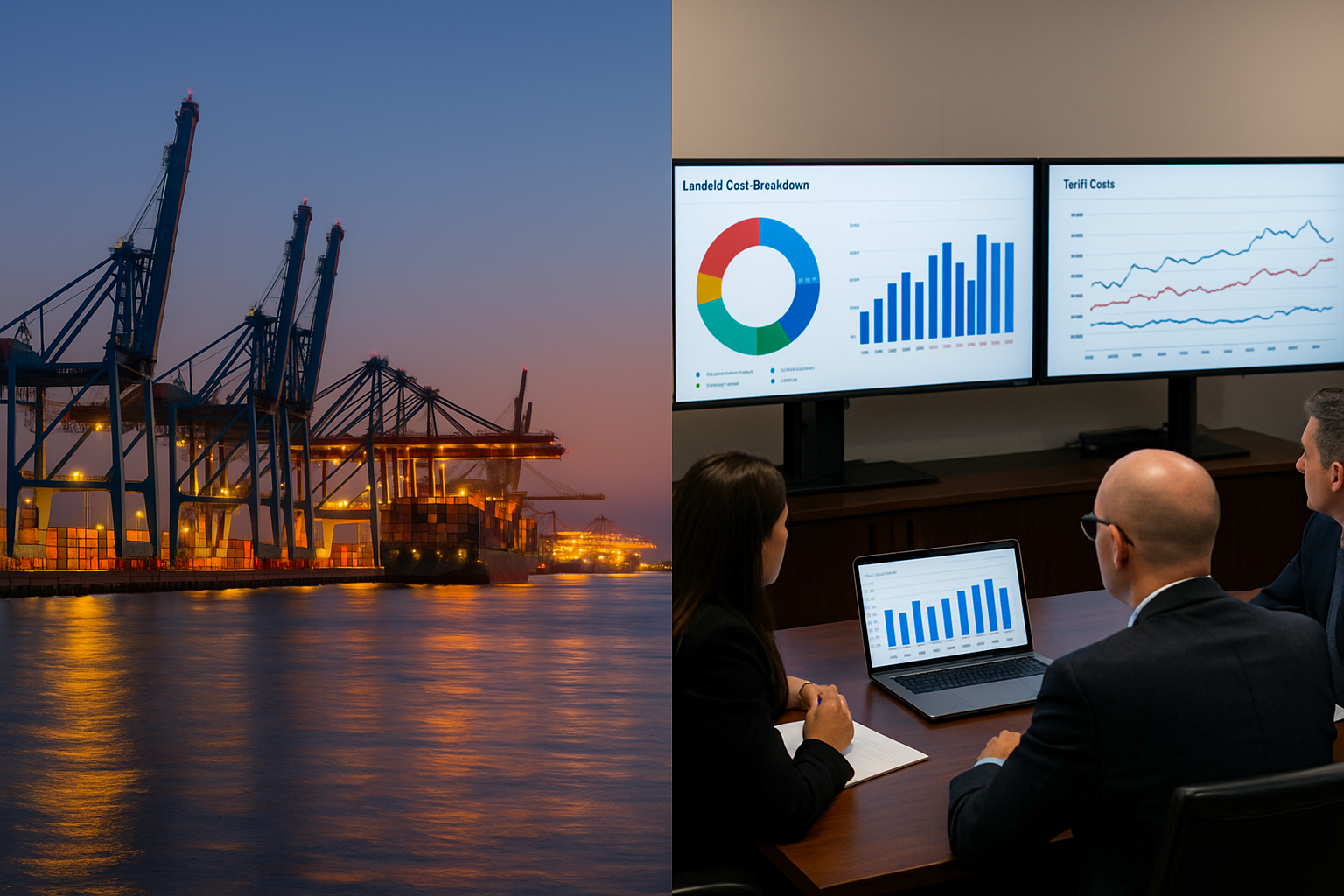Global Companies Hit by $35 Billion in U.S. Tariffs as Outlook Stabilizes
By Tredu.com • 10/20/2025
Tredu

What’s new
Global companies hit by $35 billion in U.S. tariffs as outlook stabilizes. A Reuters review of corporate filings and earnings remarks finds firms have now flagged more than $35 billion in tariff costs, up from a May tally near $34 billion, but with a notable shift in tone: many management teams report clearer visibility and more manageable planning thanks to recent trade arrangements with key partners. Estimated hits cluster at $21.0–$22.9 billion for 2025 and near $15 billion for 2026 as pricing, sourcing and hedging adapt.
Who’s paying, and where
Tariff impacts span autos, consumer goods, industrials and pharma. Automakers have disclosed multi-billion burdens tied to parts and finished vehicles; one large estimate from Toyota (~$9.5 billion) inflated the aggregate. Consumer names (apparel, appliances) flagged margin pressure from cost pass-through friction, while drugmakers pursued limited exemptions alongside pricing negotiations. Overall, executives stress that tariff expenses are now budgeted and recoverable over time via selective price hikes, redesigns and supply re-routing.
Why the outlook is stabilizing
Three forces are calming the near-term picture:
New trade deals with allies. Fresh arrangements with the EU and Japan are trimming worst-case scenarios and enabling firmer guidance ranges into 2026.
Operational rewiring. Companies have accelerated supplier diversification, shifted assembly footprints, and locked in longer-dated contracts to damp volatility.
Pricing discipline. After a year of experimentation, more firms report successful pass-through in premium segments, with elasticity manageable so far. (Inference from management commentary summarized by Reuters.)
The unresolved risks
Stabilization is not the same as safety. Policy remains fluid, and potential new or higher China tariffs, up to 100% in floated scenarios, would reset the math for supply chains that still depend on Chinese inputs or final assembly. U.S. business groups also warn that tight export-control rules are freezing deals and complicating licensing, adding another layer of uncertainty for tech and industrial firms.
Sector snapshots
Autos & components. Carmakers are re-balancing builds toward U.S. production where feasible, leveraging local content to minimize tariff bite. While some relief could come through carve-outs, most CFOs still model elevated parts costs and intermittent logistics friction.
Consumer & retail. Apparel, footwear and home goods pivoted to Vietnam, India, Mexico and near-shoring; margin recovery hinges on cadence of price hikes and promo restraint. Brands with strong pricing power are coping better than value tiers.
Pharma & healthcare. Select companies (e.g., Pfizer, AstraZeneca) have sought tariff exemptions where products intersect with public-health priorities; most still model incremental costs but see limited demand impact.
Industrial tech & electronics. Export-control changes and approval delays remain a wildcard, especially for companies selling to China-owned affiliates. Procurement teams are doubling down on dual-sourcing and inventory buffers.
Regional and macro context
The tariff regime has lifted average U.S. rates to their highest since the 1930s, with knock-on effects for trade corridors. India-U.S. flows, for instance, have shown sharp export declines in recent months amid tariff rows, illustrating how quickly bilateral frictions can bite. Globally, however, firms report that the fog is lifting enough to resume capex and network planning, albeit with higher structural costs.
How companies are adapting
- Contracts & carve-outs. Renegotiated terms share costs across suppliers and customers; some sectors secure partial relief via deal-specific carve-outs.
- Design-to-value. Product redesigns reduce tariff-exposed components; modular builds allow faster supplier swaps. (Inference based on standard mitigation outlined by executives.)
- Financial hedging. FX and commodity hedges smooth P&L while new surcharge frameworks align pricing with landed-cost volatility.
Investor lens
For equities, the story shifts from shock to integration. While tariffs still compress margins in sensitive categories, stabilization plus selective relief can narrow guidance ranges and lower risk premia. Watch for: (1) companies citing lower 2026 run-rate impacts; (2) evidence of sustained pass-through without volume attrition; and (3) disclosures on ally-deal offsets. A left-tail remains: a new wave of China-focused tariffs or broader export controls would re-widen uncertainty.
What to watch next
- Formal texts or timelines for EU/Japan arrangements that temper tariff exposure.
- U.S. export-control revisions or licensing backlogs that affect tech shipments to China-linked entities.
- Earnings call color on 2025–26 cost bridges and how quickly companies see tariff burdens rolling off.
Bottom line
The headline is blunt, global companies hit by $35 billion in U.S. tariffs, but the outlook is stabilizing as new deals with allies, supply-chain rewiring and pricing discipline kick in. The core theme: costs remain high, yet the tariff shock is evolving into a managed, modelable line item, barring a renewed escalation on China.

How to Trade Like a Pro
Unlock the secrets of professional trading with our comprehensive guide. Discover proven strategies, risk management techniques, and market insights that will help you navigate the financial markets confidently and successfully.


